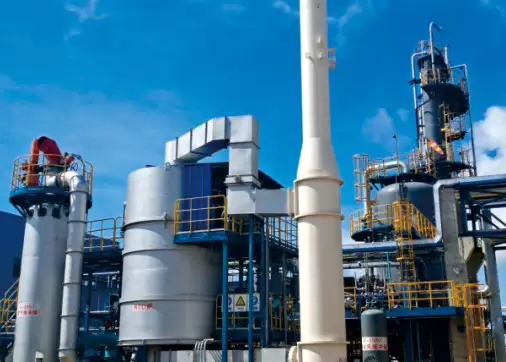What are the safety considerations for an RTO in air pollution control?
1. Fire and Explosion Hazards
– The regenerative thermal oxidizer (RTO) system involves high temperatures, which can create fire and explosion hazards.
– Adequate fire protection systems, such as flame arrestors and spark detection and extinguishing systems, should be installed.
– Regular inspections and maintenance of all safety devices and equipment are necessary to prevent any potential accidents.
2. Thermal Stress and Equipment Failure
– RTOs undergo thermal stress due to continuous heating and cooling cycles, which can lead to equipment failure.
– Proper design and construction of the RTO system, including high-quality materials and insulation, are essential to withstand thermal stress.
– Regular monitoring and maintenance of the RTO components, such as heat exchangers and valves, are necessary to prevent any premature failures.
3. Air Pollution Control Efficiency
– The primary purpose of an RTO is to control air pollution by oxidizing volatile organic compounds (VOCs) and hazardous air pollutants (HAPs).
– The RTO system must be designed and operated to achieve high destruction and removal efficiency (DRE) for the targeted pollutants.
– Routine inspection and maintenance of the RTO system, including cleaning of heat exchange media and monitoring of gas concentrations, are essential to ensure optimal performance.
4. Worker Safety
– Operators and maintenance personnel working with RTO systems should follow strict safety protocols.
– Personal protective equipment (PPE) such as heat-resistant clothing, gloves, and goggles should be worn.
– Proper training and knowledge of the RTO system’s operation and emergency procedures are vital to prevent accidents and minimize risks to workers.
5. Environmental Impact
– While RTOs are effective in air pollution control, they also have potential environmental impacts.
– Proper disposal of combustion by-products, such as ash and particulate matter, is crucial to prevent pollution of soil and water.
– Regular monitoring of emissions and compliance with environmental regulations are necessary to minimize any adverse effects on the environment.
Conclusion
In conclusion, the safety considerations for an RTO in air pollution control are of utmost importance to prevent accidents, equipment failure, and environmental complications. Fire and explosion hazards, thermal stress, air pollution control efficiency, worker safety, and environmental impacts must be carefully addressed and managed to ensure the safe and effective operation of an RTO system.


Company Introduction
We are a high-tech enterprise specializing in the comprehensive treatment of volatile organic compounds (VOCs) exhaust and carbon reduction energy-saving technology. Our core technologies include thermal energy, combustion, sealing, and automatic control. We have capabilities in temperature field simulation, air flow field simulation modeling, ceramic heat storage material performance, molecular sieve adsorption material selection, and VOCs high-temperature incineration oxidation characteristics testing.
Team Advantages
We have an RTO technology R&D center and waste gas carbon reduction engineering technology center in Xi’an, as well as a 30,000 square meter production base in Yangling. We are a leading manufacturer of RTO equipment and molecular sieve rotary wheel equipment globally. Our core technical team comes from the Aerospace Liquid Rocket Engine Research Institute (Aerospace Sixth Institute). We currently have over 360 employees, including more than 60 R&D technical backbones, including 3 senior engineers, 6 senior engineers, and 47 thermodynamics doctors.
Core Products
Our core products are the rotary valve regenerative thermal oxidation furnace (RTO) and molecular sieve adsorption concentration rotary wheel. Combined with our expertise in environmental protection and thermal energy system engineering, we can provide customers with comprehensive solutions for industrial waste gas treatment and carbon reduction with thermal energy utilization for various operating conditions.

We have obtained various certifications and qualifications, including intellectual property management system certification, quality management system certification, environmental management system certification, construction industry enterprise qualification, high-tech enterprise status, patents for rotary valve regenerative thermal oxidation furnace and rotary wheel heat storage incineration equipment, and patents for disc-shaped molecular sieve rotary wheel, etc.
Considerations for Choosing the Right RTO Equipment
- Determine the characteristics of the exhaust gas
- Understand local regulations and emission standards
- Evaluate energy efficiency
- Consider operation and maintenance
- Budget and cost analysis
- Select the appropriate type of RTO
- Environmental and safety considerations
- Performance testing and verification

RTO Air Pollution Control Service Process
- Preliminary consultation, on-site inspection, and needs analysis
- Solution design, simulation modeling, and solution review
- Custom production, quality control, and factory testing
- On-site installation, commissioning, and training services
- Regular maintenance, technical support, and spare parts supply
We are a one-stop solution for RTO air pollution control, providing customized RTO solutions tailored to our customers’ needs. Our professional team is dedicated to delivering high-quality services.
Author: Miya
